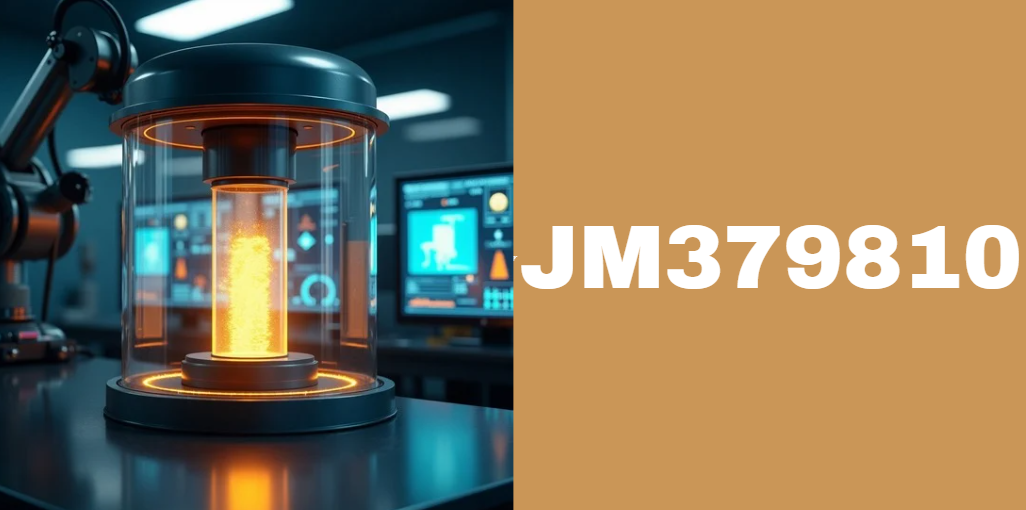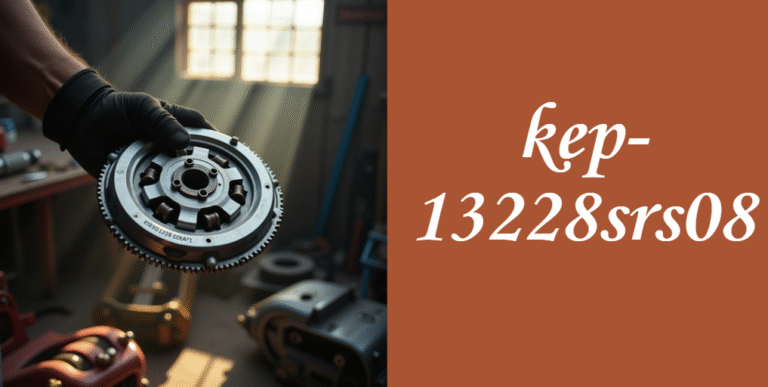JM379810 Explained: The Future-Ready Composite Material Transforming Modern Industries
JM379810 is rapidly becoming one of the most talked-about materials in advanced manufacturing and engineering circles. Known for its hybrid composition of rare-earth elements and high-performance polymers, this futuristic compound is engineered for extreme durability, thermal resilience, and multifunctional applications.
As industries race toward lighter, stronger, and more sustainable materials, jm379810 is emerging as a key solution for next-generation designs in sectors like aerospace, automotive, and electronics. Understanding this material’s unique characteristics can offer valuable insights into its current uses and future potential.
Chemical Composition & Structure
At the core of jm379810’s appeal is its innovative blend of materials. This compound fuses high-grade polymers with select rare-earth metals to create a lightweight yet ultra-strong composite. The molecular structure includes cross-linked thermoset resins that are reinforced with nano-scale elements, giving it both flexibility and rigidity where needed.
The composition typically includes:
| Component | Function |
|---|---|
| Rare-earth elements | Enhances conductivity and structural stability |
| High-performance polymers | Provides flexibility and thermal endurance |
| Nano-fillers | Improves toughness and micro-crack resistance |
This structural matrix enables jm379810 to outperform traditional materials like aluminum, steel, or carbon fiber in various conditions, especially where weight and temperature extremes are concerns.
Key Properties & Performance
What makes jm379810 a game-changer is its unmatched physical and mechanical properties. These characteristics are not only critical for engineering performance but also for long-term sustainability and cost-effectiveness.
Some of its most impressive attributes include:
- High strength-to-weight ratio: This makes it ideal for aerospace and automotive parts that require minimal weight without sacrificing durability.
- Thermal resistance: The material can withstand temperatures exceeding 600°C without degradation, making it ideal for high-heat environments.
- Corrosion and chemical resistance: Unlike metals, jm379810 resists rust and chemical reactions, ensuring a longer service life.
- Electrical conductivity: Rare-earth content enables conductive features, especially useful in electronics.
In controlled laboratory tests, jm379810 showed up to 70% improved tensile strength and 50% better thermal insulation compared to advanced steel alloys.
Primary Industrial Applications
JM379810 has found widespread application across multiple high-performance industries. Its versatility is key to its growing adoption.
Manufacturing and Tooling:
The durability of jm379810 makes it suitable for precision tools and molds that undergo repetitive stress and heat exposure. These tools last longer and require less frequent maintenance.
Automotive Sector:
In the automotive industry, jm379810 is used in engine blocks, transmission parts, and braking components. It helps reduce vehicle weight, which improves fuel efficiency and reduces emissions.
Aerospace Engineering:
JM379810 is perfect for aircraft fuselage panels, turbine blades, and thermal shielding due to its resistance to high pressure and temperature extremes.
Electronics:
The compound’s conductive and heat-dissipating nature makes it excellent for printed circuit boards (PCBs), heat sinks, and other components that require both electrical performance and thermal control.
Renewable Energy:
From wind turbine blades to solar panel mounts, jm379810’s stability and weather resistance offer a dependable material for long-term energy infrastructure.
Advantages Over Conventional Materials
One of the main reasons jm379810 is gaining global attention is its superiority over conventional materials. Traditional metals and composites struggle to offer the balance of features that jm379810 provides.
Here’s a quick comparison:
| Feature | JM379810 | Steel | Carbon Fiber |
|---|---|---|---|
| Weight | Very Low | High | Low |
| Heat Resistance | Very High | Moderate | Low |
| Corrosion Resistance | Excellent | Poor | Good |
| Conductivity | Moderate to High | Low | Low |
| Cost Efficiency | High (Long-Term) | Moderate | Low |
Unlike other materials that excel in one area but compromise in another, jm379810 offers a well-rounded performance profile. Its use often leads to longer product life, fewer replacements, and better operational efficiency.
Technical & Implementation Challenges
Despite its many benefits, jm379810 is not without challenges. One of the biggest hurdles is its cost. Rare-earth elements are expensive to extract and refine, and high-tech polymer synthesis is equally costly. These expenses make the upfront cost of jm379810 components relatively high.
Additionally, supply chain limitations can affect availability. Rare-earth mining is geographically concentrated, and any disruption can impact production timelines. Finally, the handling and processing of this material require specialized skills, tools, and safety protocols.
Companies adopting jm379810 must consider these factors as part of their operational planning.
Manufacturing & Processing Techniques
Producing jm379810 involves a highly controlled environment where temperature, pressure, and chemical composition must be precisely maintained. Manufacturing methods include:
- Vacuum Infusion: Ensures even distribution of nano-fillers and prevents air bubbles.
- Compression Molding: Delivers high-density parts with uniform strength.
- Injection Molding (for small components): Allows for high-volume production with precise dimensional accuracy.
Advanced quality control, such as X-ray fluorescence and ultrasonic testing, is often used to ensure the material meets performance specifications.
Emerging Innovations & Future Directions
Research and development efforts are actively exploring new possibilities with jm379810. Future versions may include:
- Self-healing capabilities: Microcapsules embedded within the polymer matrix could release healing agents upon damage.
- Smart adaptability: Integration with sensors to adjust material behavior in real-time.
- Eco-friendly synthesis: Efforts are underway to reduce environmental impact by using bio-based polymers and recycled rare-earths.
Moreover, as AI and robotics evolve, jm379810 is being tested in prosthetics, surgical tools, and intelligent machine components, where material adaptability and strength are critical.
Best Practices for Industry Adoption
Companies looking to transition to jm379810 should follow a phased approach. Starting with feasibility studies and material simulations can help assess compatibility with existing systems. It’s also important to invest in staff training, especially for those handling manufacturing and maintenance.
A typical adoption roadmap includes:
- Prototype testing
- Pilot production
- Staff training workshops
- Long-term performance tracking
- Feedback analysis for optimization
This careful integration ensures a smoother transition and better ROI over time.
Case Studies & Real-World Examples
Aerospace:
A major aerospace company integrated jm379810 into turbine blades. The results showed a 30% weight reduction and improved fuel efficiency during long-haul flights.
Automotive:
In a recent electric vehicle release, a major automaker used jm379810 in transmission casings. The part required zero replacements in over 100,000 km of road testing.
Electronics:
A leading semiconductor manufacturer used jm379810 for next-gen heat sinks, reducing overheating incidents by 45% compared to aluminum-based solutions.
Regulatory, Sustainability & Environmental Aspects
Sustainability is a major concern when it comes to materials like jm379810, especially due to the rare-earth mining involved. Efforts are being made to improve ethical sourcing, reduce emissions during production, and enhance recyclability.
Various countries are implementing guidelines to regulate:
- Rare-earth mining ethics
- Polymer waste management
- Product lifecycle assessments
- Export/import regulations
Environmental audits and certifications are expected to become standard practice for jm379810 manufacturers in the near future.
Conclusion
JM379810 stands out as a highly versatile, high-performance material that is reshaping how we approach modern engineering. From its complex yet powerful chemical makeup to its impressive real-world applications, the benefits far outweigh the initial challenges.
While adoption requires investment and planning, the long-term returns in performance, sustainability, and innovation make jm379810 a wise choice for forward-looking industries.
Additional posts
The Enigmatic Rise of TikTok User72188219461530: A Deep Dive into TikTok’s Most Mysterious Creator
Understanding Source Address 5910d068: A Complete Guide to Hexadecimal IP Decoding and Networking
Mizukando: The Japanese Art of Water-Inspired Living and Mindfulness






